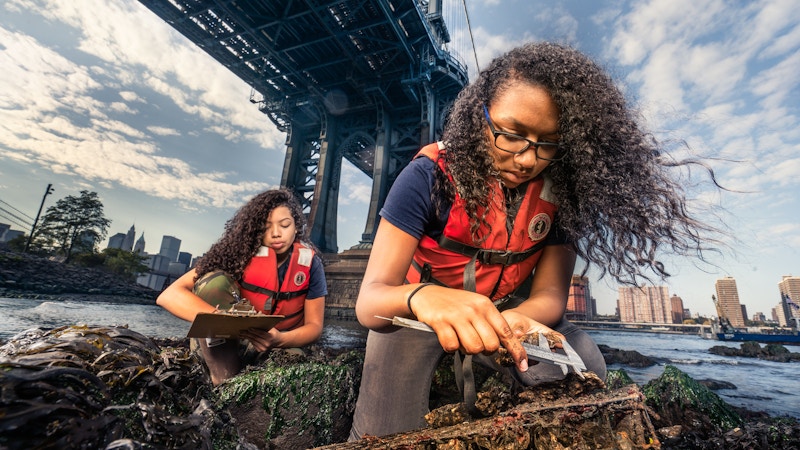The Circle Tales’ education guide Living Shorelines, explores how living shorelines (areas where land meets ocean) help fight climate change and much more. The unsung hero of the shorelines are the bivalves (two shells connected by a hinge) such as oysters, clams and mussels. In this blog, we focus on the American oyster, and its remarkable ability to sustain life on land and in the ocean.

The American oyster, also known as the Eastern oyster, lives in salty or brackish waters along the eastern shores of America, from the Gulf of St. Lawrence, Canada to the Gulf of Mexico. It feeds on tiny organisms such as algae and phytoplankton by filtering up to 50 gallons of water a day.
Oysters pump water through their gills to filter out food. In the process, it cleans the water of chemical pollution caused by human activities on land such as fertilizer, pesticide, oil, detergents and sewage. When the water is clean and clear, the sun’s rays reach plants in the ocean, so they can grow in a process known as photosynthesis. Plants not only supply food to oysters and sea creatures, but they also produce oxygen or the air we breathe.
Oysters live in clusters on top of one another in a structure called a reef. Reefs are formed by a cement that oysters produce, allowing them to stick together underwater. By the way, did you know that scientists are trying to copy this nature-based cement to develop a waterproof glue for surgeries? When you mimic or copy a strategy found in nature to solve a human design challenge, that’s called biomimicry!
Reefs also attract all types of marine life from microscopic fish to crabs to flounder to anchovies to shrimp. There is a lot of biodiversity around the reefs because creatures love to live there since they can find food and also hide from predators.
Last, but not least, one of the biggest reasons oyster reefs help sustain life on land is that they protect the shores from erosion and they slow waves down. Climate change, which is an increase in the earth’s overall temperature because of human activities such as burning fossil fuels, means there are more frequent and intense storms.
Reefs protect the land from storms because they break the water or slow it down before it reaches the shore. Environmentalists, landscape architects, engineers and non-profits are working together to build ‘living breakwaters’ and living shorelines around the United States to protect the land from storms, to clean the water and to create more biodiversity. They are also trying to restore or replace the eastern oyster population to what it used to be hundreds of years ago. The global oyster population has declined by 85% due to overfishing, pollution, climate change and coastal erosion.
The Billion Oyster Project is a NYC non-profit hoping to earn back that name. They are building oyster reefs throughout the city’s surrounding waters by recycling shells from partnering restaurants. To date, they have planted over 30 million oysters and recycled one million pounds of shells. They work with other groups like landscape architects called SCAPE and environmentalists like Nature Conservancy to make sure they are including the native species and building the reefs in the right places.





